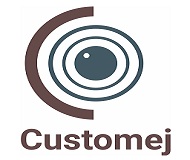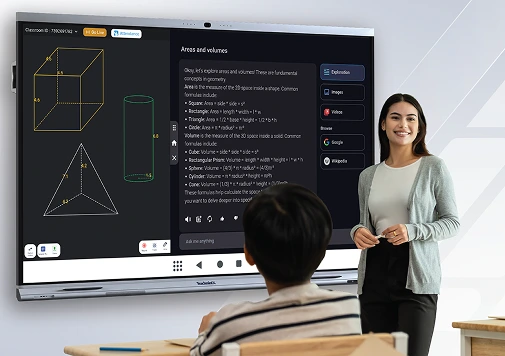The chalkboard has had a long and iconic run in classrooms around the world. But today, it’s being replaced by a tool that’s not just smarter—it’s transformational. Enter the digital board, a teaching innovation that’s revolutionizing education for both teachers and students alike.
Whether it’s making lessons more interactive or enabling remote learning, a digital board for teaching brings a world of possibilities to the classroom. It’s no longer just about conveying information—it’s about igniting curiosity, enhancing collaboration, and enabling students to experience learning like never before.
From Traditional to Digital: The New Classroom Reality
Classrooms used to rely heavily on static teaching tools—blackboards, printed books, and overhead projectors. These tools, while functional, offered limited engagement. But today’s learners are tech-savvy and demand more visual, hands-on, and personalized experiences.
A digital board seamlessly combines the capabilities of a whiteboard, computer, projector, and smart device into one powerful tool. Teachers can write, draw, present, stream content, and conduct real-time assessments—all from a single interface. This integrated approach helps them adapt quickly, save time, and most importantly, connect better with their students.
How Digital Boards Empower Teachers
1. Teaching with Multimedia at Your Fingertips
Lessons that once relied solely on textbooks can now be enriched with videos, animations, diagrams, and real-time internet searches. Teachers can:
- Show historical videos during social science classes
- Break down complex formulas using visual aids
- Play pronunciation exercises in language lessons
This keeps lessons lively, interactive, and memorable.
2. Instant Annotations and Real-Time Corrections
Whether it’s highlighting key points or solving a student’s doubt on the fly, digital boards allow teachers to annotate and modify content instantly. No need to erase and rewrite—just tap, edit, and move on. This real-time responsiveness helps maintain momentum in the classroom.
3. Effortless Integration with Online Tools
Digital boards can sync with educational software, cloud platforms, and LMS systems. Teachers can:
- Upload assignments to Google Classroom
- Display data from online resources
- Access cloud-stored lesson plans
This enables streamlined lesson delivery, centralized management, and flexible curriculum planning.
4. Time-Saving Automation
With features like pre-saved templates, digital attendance, and instant quiz grading, digital boards minimize repetitive tasks. This means teachers can spend more time interacting with students instead of doing paperwork.
How Students Benefit from Digital Boards
1. Learning That’s Fun, Visual, and Interactive
Students engage best when learning is visual and hands-on. Digital boards offer a multisensory experience that includes:
- Interactive diagrams and animations
- Educational games and quizzes
- Touch-enabled participation
These features not only make learning more enjoyable but also significantly improve knowledge retention.
2. Peer Collaboration in Real Time
Group activities get a boost with digital boards. Multiple students can collaborate on tasks, brainstorm ideas, and solve problems directly on the screen. This enhances communication skills, teamwork, and peer learning.
3. Equal Access to Information
All content shown on a digital board can be saved and shared. This means:
- Absent students can catch up easily
- Students can review difficult concepts at their own pace
- No need to rely solely on note-taking during class
Such access supports students with different learning needs and speeds.
4. Hybrid Learning Friendly
With schools adopting hybrid models, digital boards bridge the gap between physical and remote classrooms. Teachers can:
- Stream classes live
- Record sessions for later viewing
- Share whiteboard notes digitally
This ensures continuity of education, even outside the classroom walls.
Supporting Personalized Learning
No two students are the same. A digital board allows teachers to personalize lessons through:
- Interactive exercises tailored to student levels
- One-on-one tutorials with recorded demonstrations
- Instant polls and quizzes to gauge understanding
Teachers can assess progress in real time and adjust teaching strategies accordingly.
Midway Tech Advantage: Choosing the Right Digital Board
When deciding to invest in a digital board, it’s important to choose a solution that balances ease of use, performance, and educational value. For schools looking to get the most out of their investment, selecting the best digital board for teaching is essential.
A good digital board should offer:
- High-resolution display for clear visuals
- Responsive multi-touch support
- Built-in collaboration tools
- Compatibility with teaching software and cloud systems
- User-friendly interface with minimal learning curve
The right technology not only transforms teaching—it creates lasting impact on learning outcomes.
Real-Time Assessment and Feedback
In traditional classrooms, teachers rely on periodic exams to evaluate students. Digital boards, however, make assessment continuous and dynamic. Teachers can:
- Launch interactive quizzes during lessons
- Display poll results immediately
- Use analytics to track class performance
This enables immediate intervention and support, helping students improve steadily.
Eco-Friendly and Cost-Efficient
Going digital also means going green. Schools that switch to digital boards reduce:
- Paper usage
- Printing costs
- Chalk, markers, and other disposable teaching supplies
Over time, this translates into savings and a smaller environmental footprint.
Bridging the Urban-Rural Education Divide
One of the overlooked benefits of digital boards is their potential in rural and under-resourced schools. With internet connectivity and the right tools, these boards can:
- Bring expert teaching to remote areas
- Offer students access to high-quality digital content
- Facilitate teacher training through remote modules
This democratizes access to quality education.
Preparing for the Digital Future
From higher education to the workplace, digital fluency is becoming a core skill. Introducing students to smart learning environments prepares them for:
- Remote collaboration tools
- Presentation and research platforms
- Navigating tech-integrated careers
By learning through digital mediums, students build confidence and adaptability in a digital-first world.
Conclusion
Digital boards are not just upgrades—they are game-changers in education. For teachers, they unlock creativity and efficiency. For students, they make learning more exciting, interactive, and personalized. And for schools, they offer a scalable, sustainable, and future-proof solution to teaching.
Investing in a digital board for teaching is an investment in engagement, effectiveness, and equity. And when chosen wisely, the best digital board for teaching can truly revolutionize not just how knowledge is shared—but how it is experienced, absorbed, and applied in the real world.




